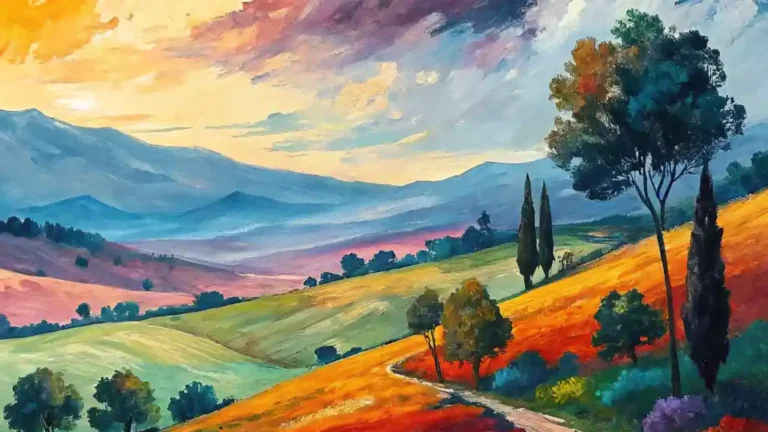Introduction
If you’ve ever felt drawn to the beauty of landscapes but crave the freedom to express more than just the literal view, you’re about to discover the world of abstract art landscape paintings. This captivating genre lets you interpret nature’s essence through shapes, colors, and emotion rather than exact details. Whether you’re a beginner exploring artistic avenues or a seasoned painter seeking fresh inspiration, understanding how to approach painting an abstract landscape will elevate your creativity.
In this guide, you’ll explore the core of modern abstract landscape paintings, dive into popular techniques like acrylic painting abstract landscape, and even learn how minimalist concepts can transform your work. Ready to begin your journey into the abstract world of landscapes? Let’s dive in.
Table of Contents
What Is Abstract Landscape Painting?
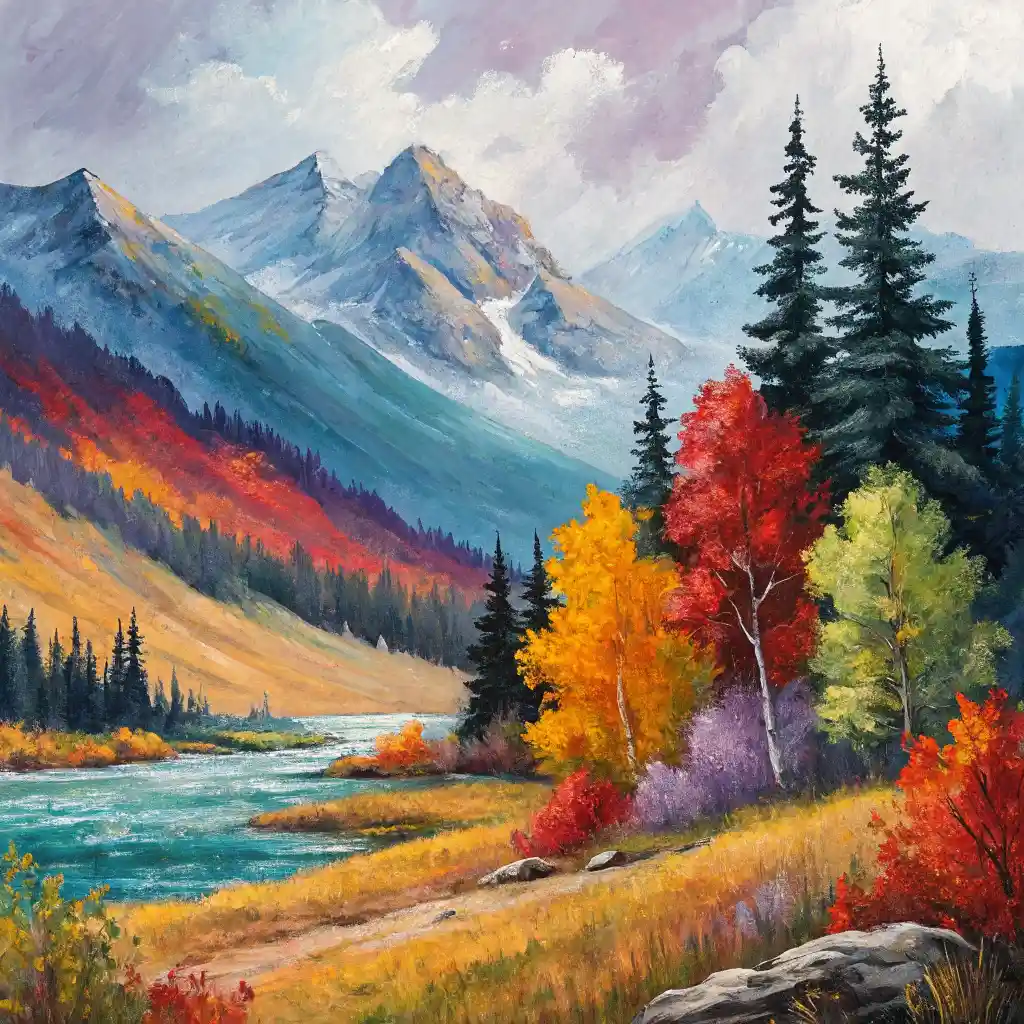
At its core, abstract landscape painting is a departure from traditional depictions of nature. Instead of meticulously recreating a scene, you’re invited to capture the mood, movement, and spirit of the landscape. You might blend colors evocative of a sunset or use bold geometric shapes to convey the rhythm of rolling hills.
Unlike classical landscape art, which emphasizes realism, abstract paintings of landscapes embrace imagination and emotional resonance. This freedom allows you to convey more than just what the eye sees—feelings, memories, and even philosophies about nature find expression here.
Famous artists in this realm—such as Georgia O’Keeffe and Wolf Kahn—have shown how landscapes can be distilled into vibrant forms and colors, inspiring countless artists to explore their own interpretations.
Techniques and Materials Used
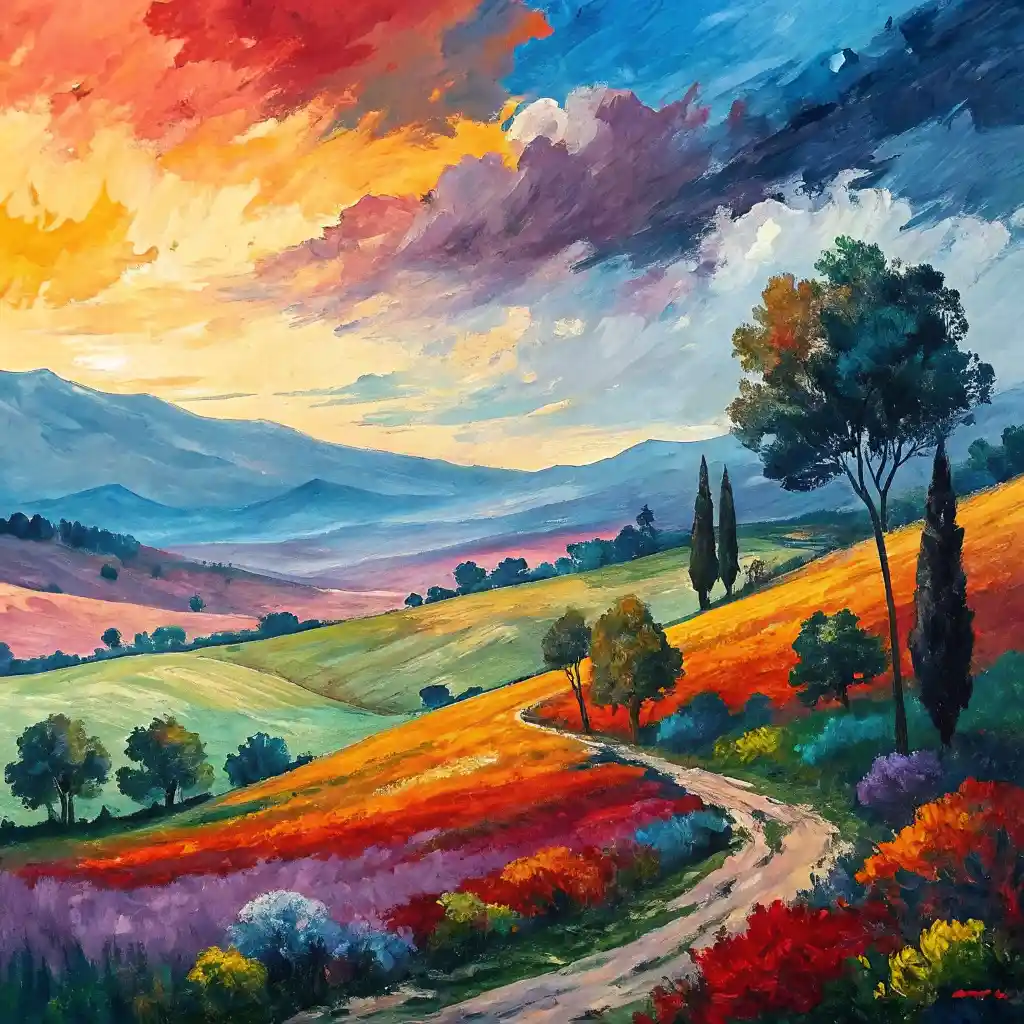
When you embark on painting an abstract landscape, your choice of medium and technique plays a crucial role in shaping the final work. Acrylics, watercolors, oils, and digital tools each bring unique qualities to your art.
Acrylic Painting Abstract Landscape
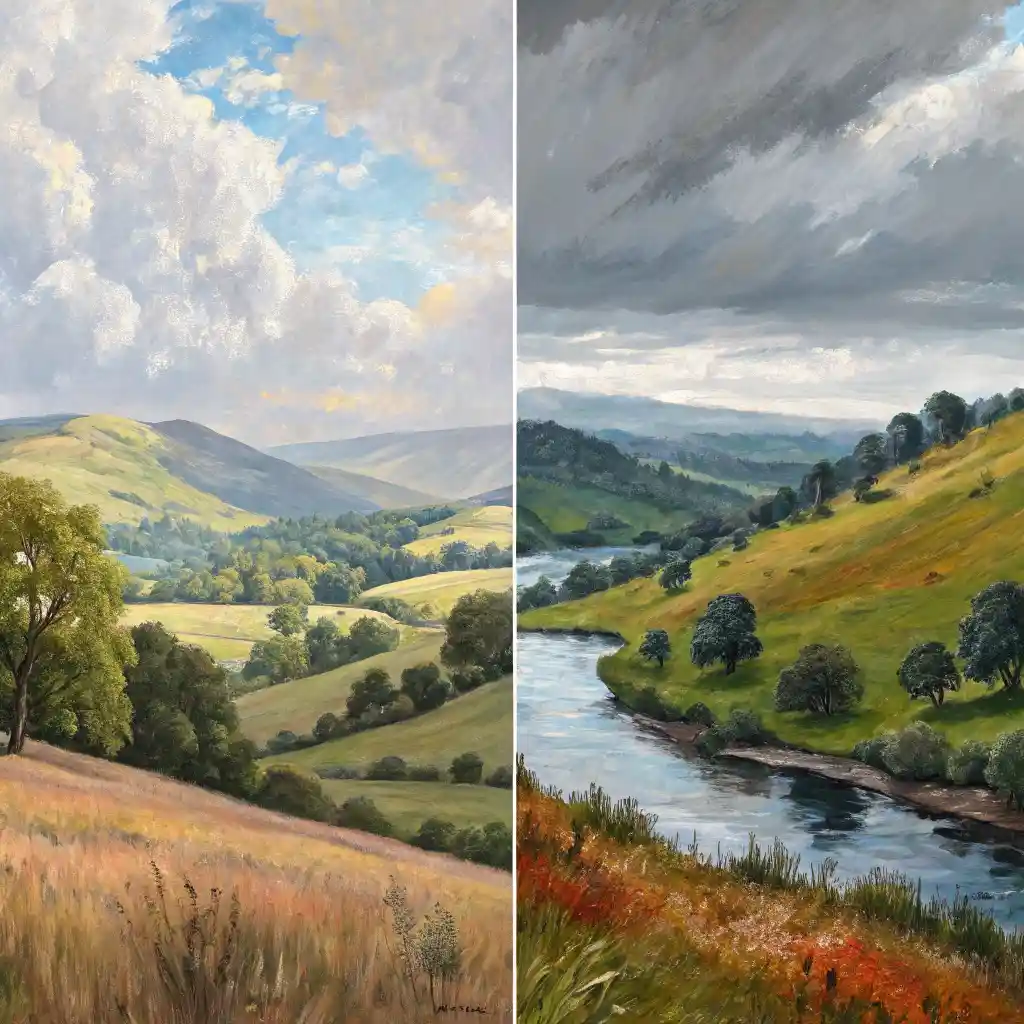
Acrylic paint is a favorite for many abstract artists because of its versatility and fast drying time. Whether you’re layering thick textures or applying thin washes, acrylic abstract landscape painting allows you to experiment freely.
- Layering: Build up colors and textures to create depth and interest.
- Texture tools: Use palette knives, sponges, or even fabrics to add tactile dimension.
- Bold strokes: Emphasize movement with broad, energetic brushstrokes.
By mastering these techniques, your abstract landscape paintings acrylic style will develop its own voice—bold, vibrant, and unmistakably yours.
Watercolors and Oils
While acrylics are accessible, you might find watercolors perfect for soft, ethereal interpretations or oils ideal for rich, blended color transitions. Each medium offers a distinct experience, but acrylics’ flexibility makes them particularly suited to abstract landscapes.
Tools to Consider
- Brushes of various sizes and shapes
- Palette knives for texture
- Canvas or heavy watercolor paper
- Mixing palettes and mediums for acrylics
The tools you select will shape how you express your vision, so don’t hesitate to experiment.
Styles and Trends in Abstract Landscape Painting
Abstract landscape art isn’t monolithic—it spans a spectrum from bold and colorful to serene and minimalist. Understanding different styles will help you find your niche.
Modern Abstract Landscape Paintings
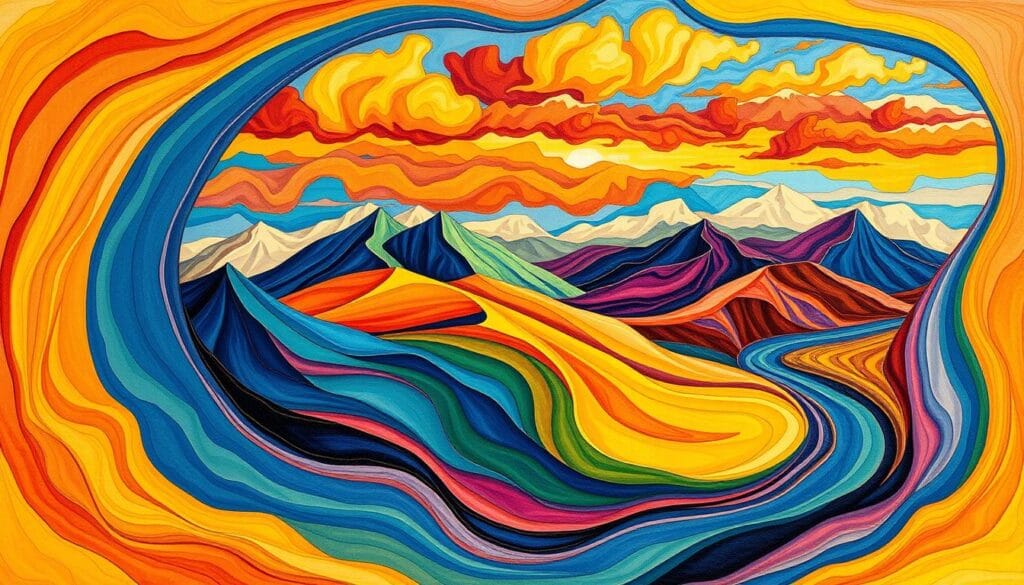
These works often combine contemporary aesthetics with abstract techniques. Expect vibrant palettes, dynamic compositions, and innovative materials. They reflect current artistic trends, incorporating elements like digital textures or mixed media.
Minimalist Abstract Landscape Painting

If you’re drawn to simplicity, minimalist abstract landscape painting offers a compelling approach. Here, fewer colors and shapes communicate the essence of the scene, creating calm and introspective works. Minimalist art often highlights space, balance, and subtle textures, encouraging viewers to find meaning in simplicity.
Exploring minimalist abstract landscape painting techniques will teach you the power of restraint and precision in your artwork.
How to Interpret Abstract Landscape Paintings
You might wonder: how do you interpret a painting that doesn’t show a clear scene? The beauty of abstract paintings of landscapes lies in their open-endedness.
- Colors evoke mood: warm hues can suggest sunsets or autumn leaves, while cool tones may convey water or sky.
- Shapes and textures hint at natural elements—jagged lines might represent mountain ranges; soft curves could symbolize rolling hills or waves.
- Your own emotions influence interpretation. A painting might make you feel calm, energized, nostalgic, or contemplative, depending on your personal connection.
As you create, remember that your work invites viewers to bring their own experiences, making every interpretation unique.
Learn to Paint Abstract Landscapes: Step-by-Step for Beginners
If you’re excited to start painting an abstract landscape, here’s a beginner-friendly roadmap:
1. Gather Materials
- Acrylic paints (start with primary colors plus white and black)
- Canvas or acrylic paper
- Brushes and palette knives
2. Choose a Landscape or Mood to Interpret
You don’t have to replicate an exact place. Pick an inspiration—sunset, forest, ocean breeze, or even an abstract concept like “tranquility.”
3. Block in Basic Shapes and Colors
4. Add Texture and Details
Using large brushes, lay down broad areas of color. Don’t focus on details yet; think about the overall composition.
Incorporate layers with a palette knife or smaller brush. Play with contrasts between smooth and rough areas.
5. Refine and Simplify
Step back often and decide where to add or remove elements. Sometimes less is more.
6. Let Your Emotion Guide You
Abstract art thrives on emotion. Let yourself be spontaneous, and don’t fear imperfections.
Buying and Selling Abstract Landscape Paintings
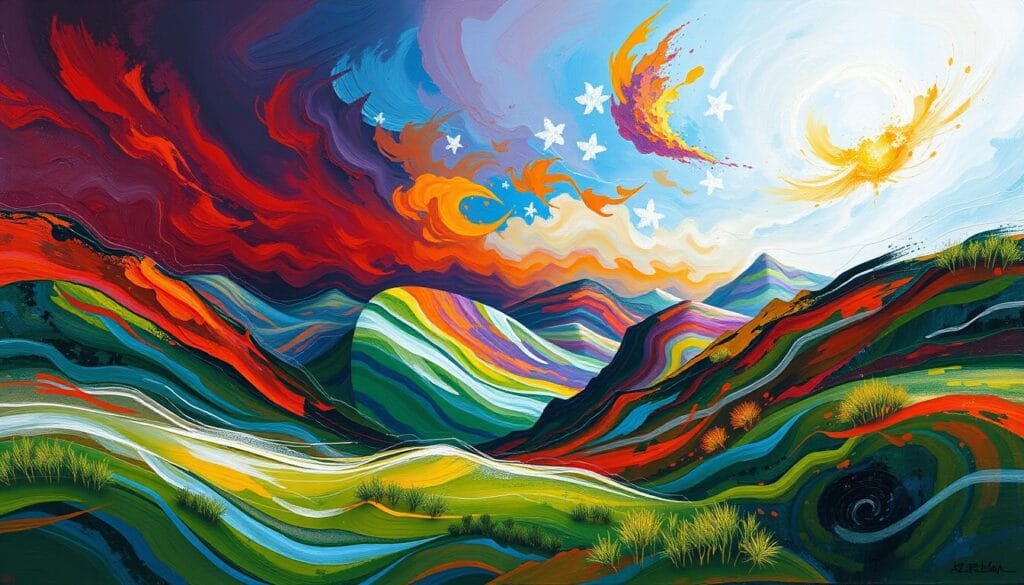
Whether you’re looking to buy or sell, the market for abstract landscapes is vibrant and growing.
Where to Buy
- Online galleries specializing in modern abstract art
- Art fairs and exhibitions
- Directly from artists’ websites or social media pages
Look for keywords like original abstract paintings for sale or abstract landscape art prints to find options that suit your style and budget.
Selling Tips
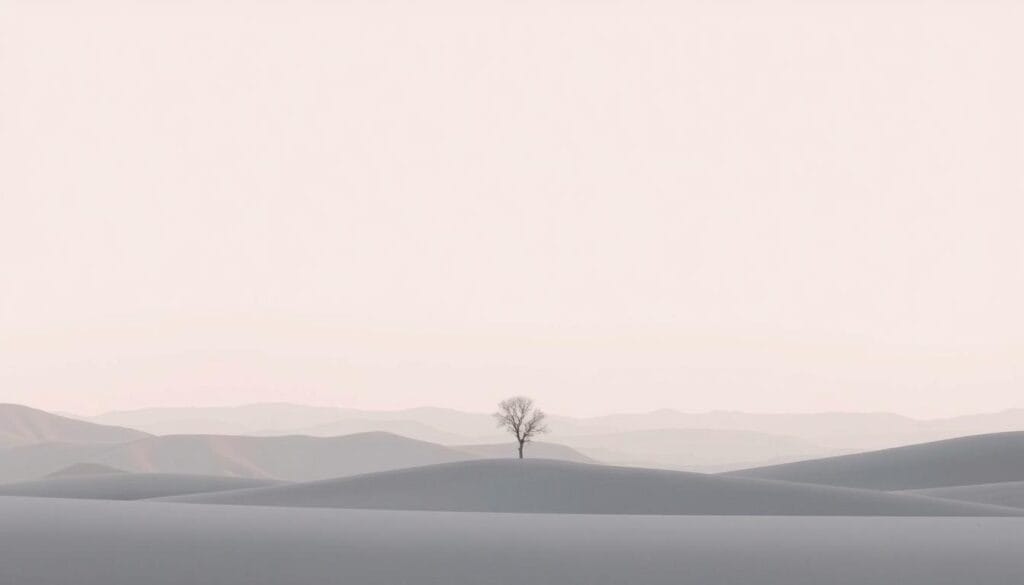
- Showcase your acrylic abstract landscape paintings with high-quality photos.
- Share your artistic story to connect with buyers.
- Use online marketplaces and social media platforms to reach wider audiences.
Using Abstract Landscapes in Home Decor
One of the joys of owning abstract art is its versatility in decorating spaces.
- Large colorful canvases can become focal points in living rooms.
- Minimalist pieces add subtle elegance to bedrooms or offices.
- Abstract landscapes with neutral tones complement modern, rustic, or eclectic interiors.
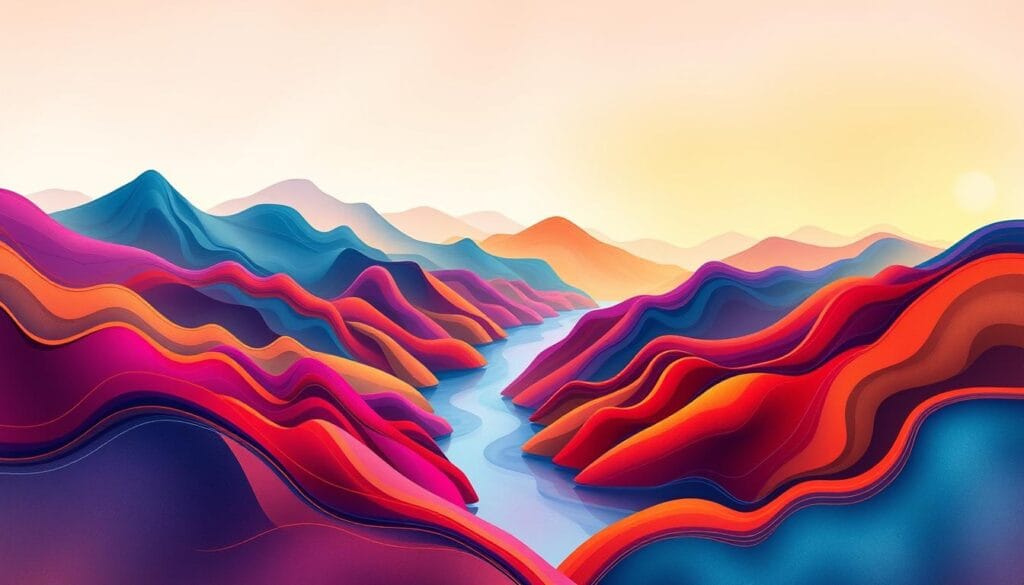
Think about balance and scale when choosing artwork. Your painting should enhance the room’s mood and style.
Frequently Asked Questions (FAQ)
Q: What makes abstract landscape paintings different from traditional landscapes?
A: Abstract landscapes focus on emotional and visual interpretation rather than realistic representation.
Q: Can beginners learn to paint abstract landscapes easily?
A: Absolutely! The freedom of abstraction allows beginners to experiment without fear of mistakes.
Q: What materials are best for abstract landscape painting?
A: Acrylics are versatile and user-friendly, but oils and watercolors also work beautifully.
Q: Where can I buy original abstract landscape paintings?
A: Online art galleries, artist websites, and art fairs are great places to start.
Q: How can abstract landscapes enhance home decor?
A: They ad color, texture, and a unique aesthetic that complements many interior styles.
Conclusion: Embrace Your Artistic Journey
Now that you understand the foundations of abstract art landscape paintings, it’s time to pick up your brushes and explore this inspiring art form. Whether you create vivid acrylic scenes or serene minimalist pieces, the abstract landscape world welcomes your unique perspective.
Dive into the techniques, experiment with colors and textures, and most importantly, enjoy the process of bringing your inner landscape to life. Your journey in painting an abstract landscape awaits—embrace it fully and let your creativity flow!
Ready to start creating your own abstract landscapes or find the perfect piece for your space? Explore more tips, tutorials, and art collections to fuel your passion and transform your artistic vision today!

